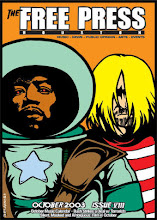The Edge of Heaven

Some films are able to just cut through the hype of being a cool art film and deliver a series of constant emotional jolts. You know the hopelessness in the last scene of Doctor Zhivago where Omar Sharif dies just as he's about to call out to Julie Christie. In The Edge of Heaven we're talking that kind of hurt repeated in a kind of karmic circle of happenstance.
With its odd character relationships and existential bent Edge of Heaven at first reminded me of a Fassbinder film. How appropriate that Fassbinder mainstay Hanna Schygulla turns up about half way through. A Turkish widower living in Germany picks up a prostitute, and eventually she moves in with him. She's already drawn the wrath of a couple of Musilms who, hearing her talk in her native Turkish, threaten her with harm if she doesn't stop turning tricks. When she dies the widowers son, himself an educated German professor, travels back to Istanbul to find the woman's daughter. At this point the film, while maintaining its directorial point of view, changes stories.
Now the audience tags along with another Istanbul denizen Ayten, the daughter of the woman we met in the first act. Ayten's forced to flee the country when her student political activities escalate to violence. The depiction of a riot and subsequent police raid has an exciting action feel from the directness of the photography to the rhythm of the editing.
There are at least three more life changing encounters and the people we meet during the opening we cross paths with later. But synchronicity moves in a meandering trail in Edge of Heaven. Part of the joy of this film is not knowing and being surprised by the plot twists. Director Faith Akin is herself of Turkish and German descent.










